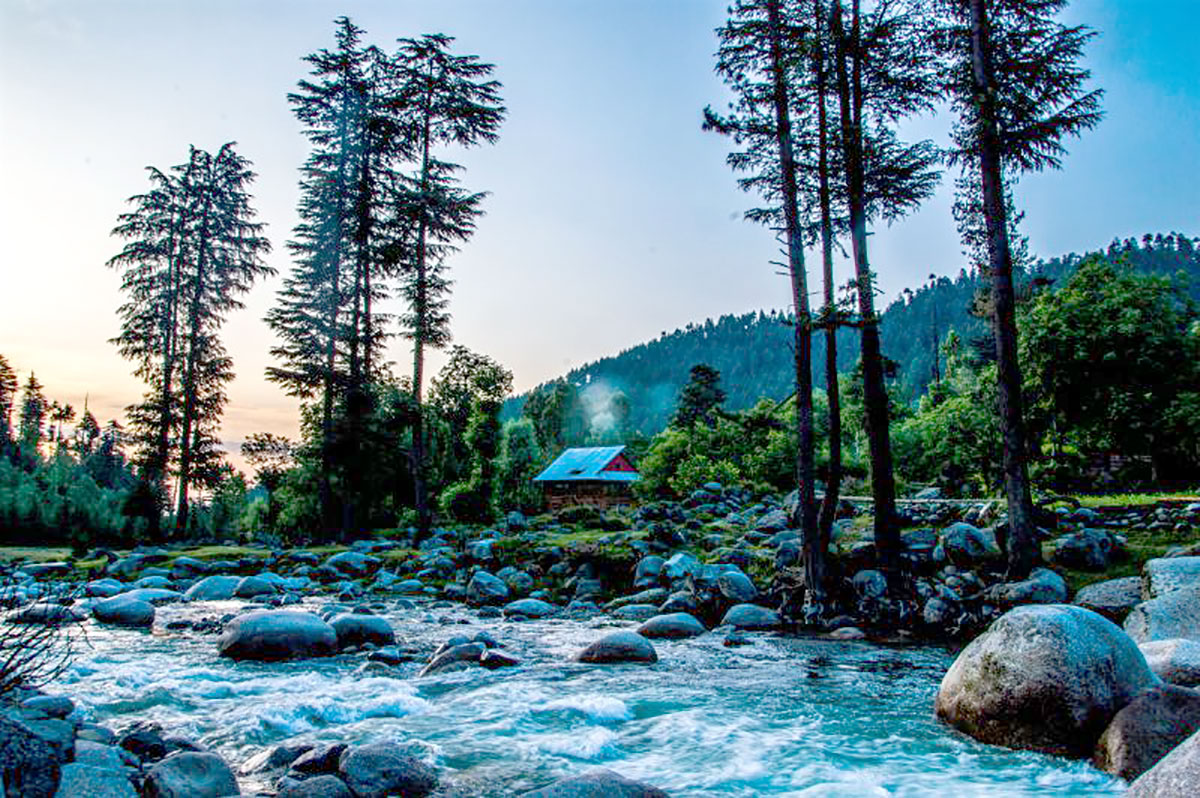by Shams Irfan
A few decades back who would have imagined that even small villages dotting the picturesque valley of Lolab in north Kashmir, would be flush with garbage and polythene turning the overall sight in an eyesore.

Small drains, rivulets and brooks, that once used to carry fresh glacial water from atop mountains, now remain chocked with tonnes of household waste.
The amount of polythene one could find in his/her immediate surroundings is overwhelming. The sad part is that we don’t even realise its presence.
From a simple candy to big household items like refrigerators and televisions, everything comes wrapped in shinny polythene now. Once we eat the candy or put the product in use, the polythene wrapper is forgotten and often ends up in our dustbins or in the open.
Given the lack of proper waste collection system, where organic and inorganic waste could have been segregated at source, these polythene bags and wrappers end up in the same Municipal collection cart.
As there is no mechanism to process this waste scientifically, or make use of it after segregation, it ends up in poorly managed landfill sites, where dogs and eagles scavenge on it for hours without disturbance.
But these landfill sites are limited to a few key areas only. In a place like Lolab, where there is no door-to-door collection system, household waste often ends up in nearest water bodies. Ironically, these water bodies are the main source of drinking water for most of the Lolab valley. Same is the case with other idyllic habitations across Kashmir valley. This leads to a number of water borne diseases at the onset of summers in Kashmir.
Given the poor healthcare system in place, fighting such diseases drains huge manpower and resources.
In most of the cases, especially in far off areas, people often end up bearing the burnt of such diseases for a long time without even realising, till it turns into epidemic.
One such example is the outbreak of cholera in villages located on the banks of roaring Sindh River in Ganderbal’s upper reaches. This happens immediately after a religious pilgrimage concludes. The waste generated during the pilgrimage often ends up in the upper areas of Sindh River near Sonmarg.
Lack of proper mechanism to keep a check on pollution level of water bodies, adds to the woes and endangers lives of those living downstream. Successive governments have failed to come up with a plan to manage the waste generated across Kashmir.
Even in summer capital city of Srinagar, which is promoted as the face of Kashmir’s tourism activity, out of 450 metric tonnes of waste generated daily, only 30 per cent of it is stored, rest ends up in open dumping sites across the city. This open dumping of waste breeds different diseases during summers when the temperature is relatively hot.
Besides, tourists visiting the Srinagar city end up carrying bad memories and lots of stench with them on their way back to home.
Over the years there has been no efforts whatsoever by the successive regimes even to construct new dumping sites on scientific lines in Kashmir. Lack of such designated sites force people to dump waste in rivers, streams, gardens, graveyards, pasturelands, in drains and on the roadsides, and almost everywhere they can.
Even highly promoted tourist towns have same sorry state of affairs, turning a valley into a huge dustbin of sorts for its residents.
Take for instance Pahalgam, one of the most visited tourist destinations in Kashmir; it lacks a proper waste disposal system and most of the waste generated by locals and tourists including polythene ends up Lidder stream. As one enters the tourist town, a little detour near Circuit Road and you are engulfed by strong stench of decomposing polythene, animal carcase, plastic waste etc. This odour then gets mixed with the air turning it into an unbearable stench. The villages located in the vicinity of this dumping site are prone to diseases.
But the focus of the government remains on ‘peaceful’ conduct of pilgrimage rather than tacking the mess of waste disposal.
There are a few voluntarily efforts to clean up the mess left by the visitors but it is not enough. What is needed is a sustained effort by the government to keep Kashmir neat and clean, which in turn keeps its inhabitants free from diseases. To start with, government should impose a carpet ban on single use polythene and plastic items. Also, there is an immediate need to rethink the way single use plastic is used in our marriage functions and other ceremonies. An aggressive campaign backed by a workable plan is need of the hour to help clean our once famed vale of Kashmir.
It is not enough to keep our home clean; a clean locality and a clean Kashmir, is what we all should strive for.














